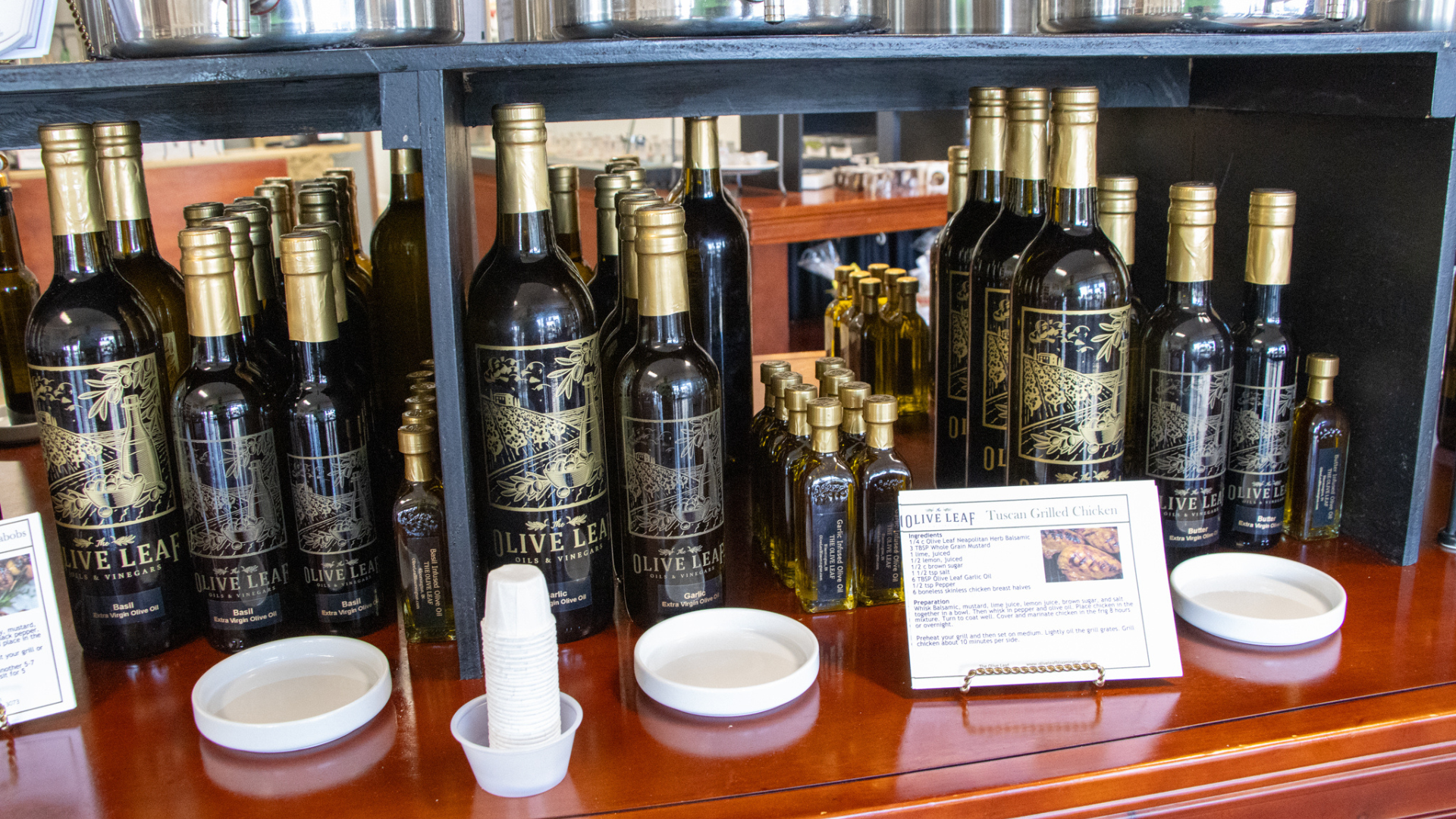The Difference Between Fused and Infused Oils
Aug 22nd 2025
If you’ve browsed the olive oil shelves at The Olive Leaf, you’ve probably noticed two flavor-packed categories: fused oils and infused oils. While they sound similar, there’s an important difference between the two — and understanding it can help you choose the right oil for your cooking, dipping, or dressing needs.
In this post, we’ll break down the difference between fused and infused olive oils, explain how they’re made, and offer tips on when to use each one.
What Are Fused Olive Oils?
Fused olive oils (sometimes called “agrumato” oils) are made by crushing fresh olives together with whole fruits, herbs, or ingredients at the time of pressing.
For example:
- Lemon fused oil is made by pressing fresh lemons together with olives.
- Blood orange fused oil is made by milling whole oranges with olives.
This method creates a bold, vibrant flavor because the ingredients are combined while everything is still fresh. Fused oils are only made during the olive harvest season, so they’re typically available in smaller batches.
Key Characteristics:
- Flavor is locked in during the pressing process.
- Often brighter, fresher, and more intense.
- Only made with fresh ingredients — no added flavoring after pressing.
What Are Infused Olive Oils?
Infused olive oils are made by starting with high-quality extra virgin olive oil, then adding herbs, spices, fruits, or natural flavors after pressing.
For example:
- Garlic-infused oil is made by steeping garlic in olive oil or adding a garlic extract to the oil.
- Basil-infused oil involves blending fresh or dried basil flavor into finished olive oil.
Infusing allows for a wider range of flavors, since it can be done year-round and doesn’t depend on harvest timing. These oils tend to have a smoother, more subtle flavor and are very versatile in the kitchen.
Key Characteristics:
- Flavors are added after the oil is pressed.
- Often softer and more balanced in taste.
- Available in a broader variety of options.
When to Use Fused vs. Infused Oils
Both types are delicious and useful — it just depends on what you’re making and the flavor you want.
Use fused oils when you want:
- A bold, punchy flavor (like for dipping bread or finishing roasted vegetables).
- A naturally citrusy kick in a salad or marinade.
- To taste the fresh ingredient in its most vibrant form.
Use infused oils when you want:
- Classic savory flavors like garlic, rosemary, or basil.
- Versatility in cooking — especially sautéing or roasting.
- A subtle layer of flavor without overwhelming the dish.
How to Tell the Difference When Shopping
At The Olive Leaf, we clearly label each bottle as fused or infused, and our team is always happy to walk you through the differences. You can also look at the ingredients — fused oils will list whole ingredients like “lemons and olives,” while infused oils typically say “olive oil with natural flavor” or something similar.
Better yet, try them side by side at our tasting bar. You’ll be able to taste the difference right away.
Final Thought
Whether you choose a bold fused oil or a savory infused one, you’re adding a layer of flavor that makes everyday meals more exciting. The key is knowing how each type is made and how it can enhance your cooking.
Explore Fused and Infused Oils at The Olive Leaf
From bright citrus to savory herbs, our collection of fused and infused olive oils is ready to elevate everything from salads to sautés. Visit our store to taste and explore, or shop online to bring new flavors to your kitchen.

